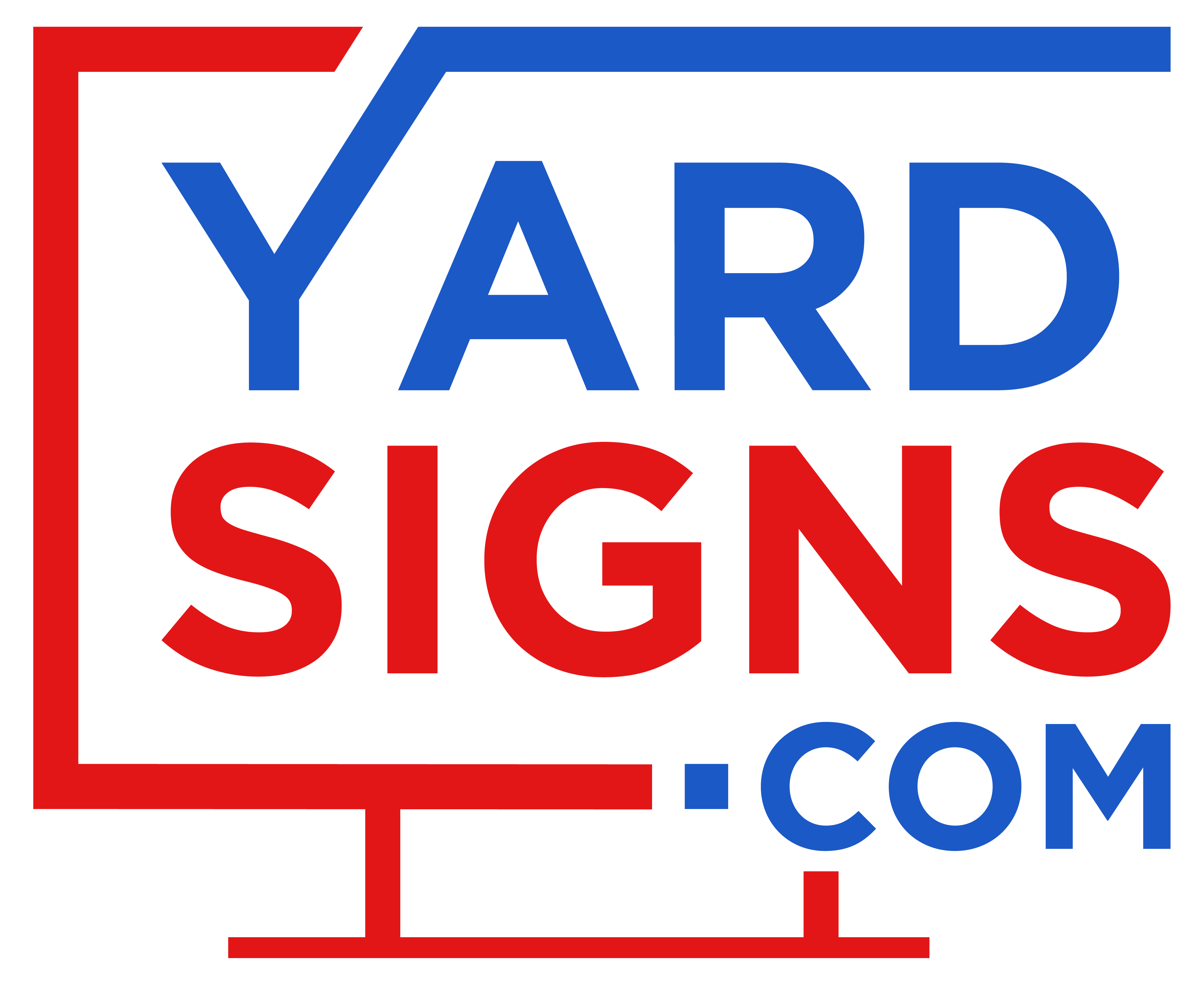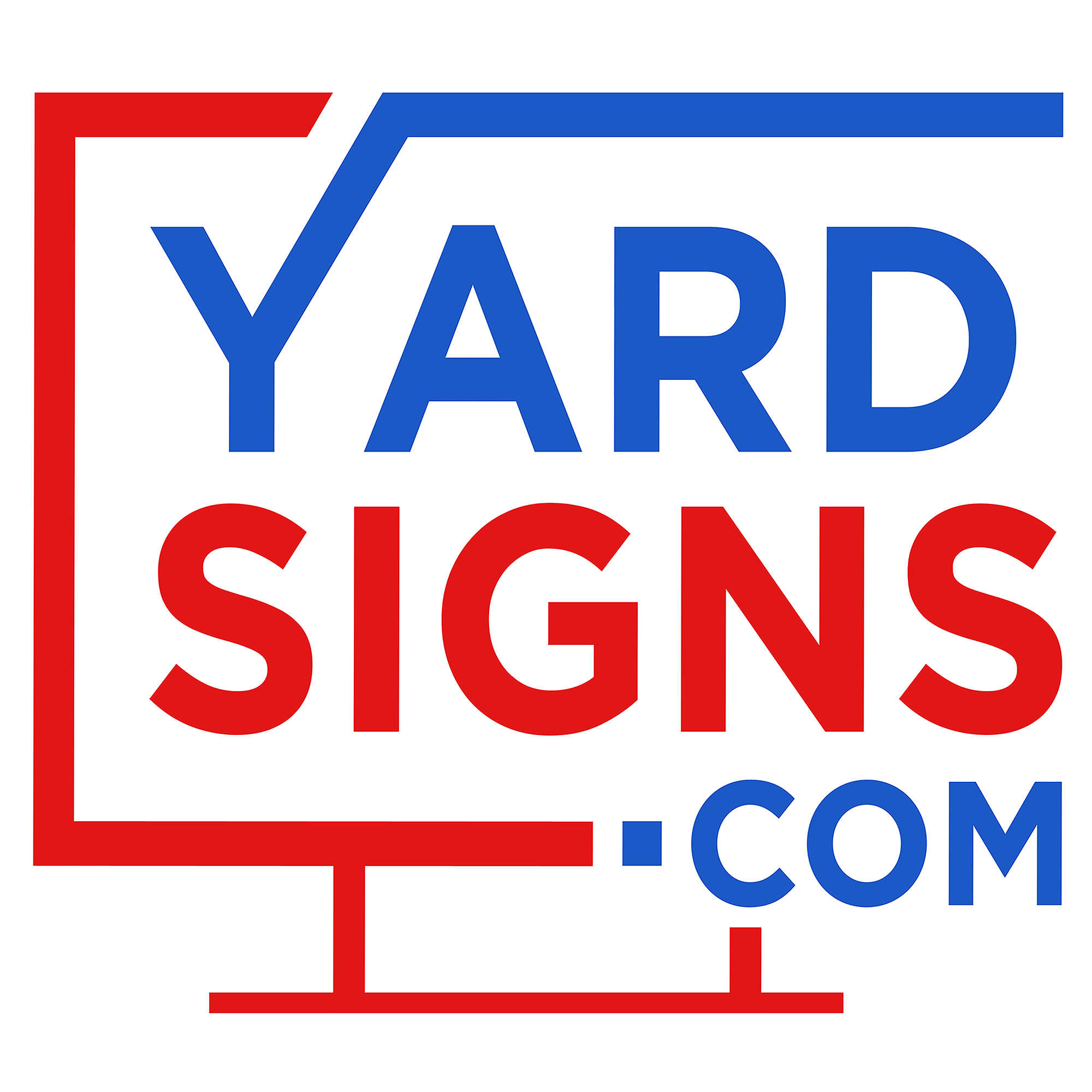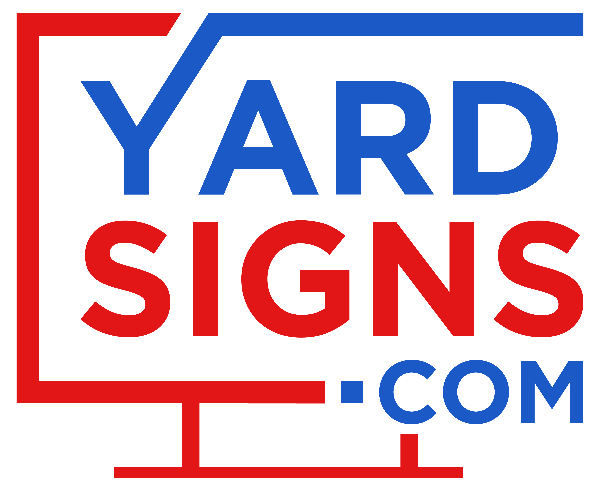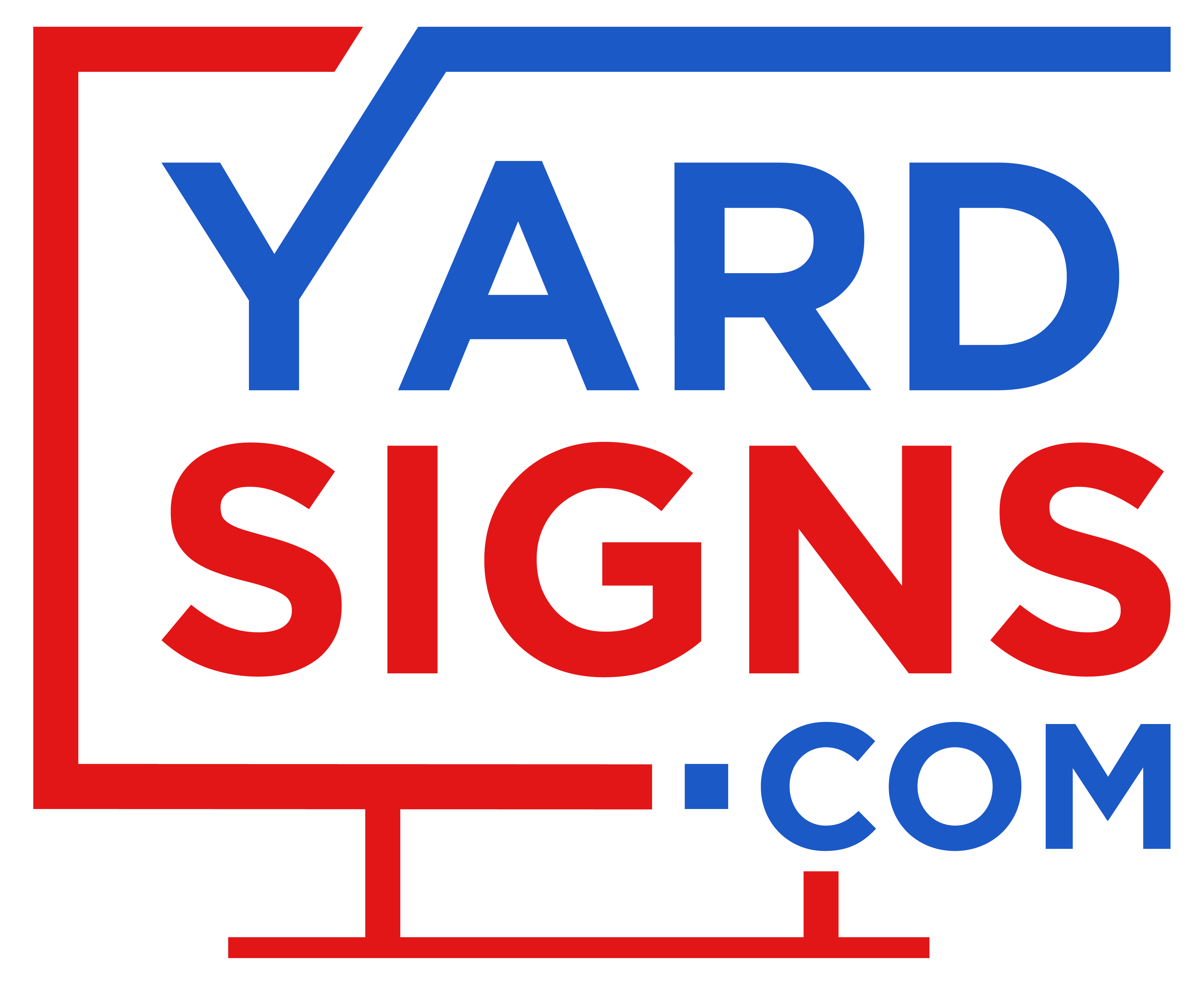Yard signs are a common way to share messages during elections, advertise services, or promote events. While placing a sign in a front yard may seem simple, doing so on public property often follows different rules.
Laws about yard signs vary by location. What is allowed in one city or state may not be allowed in another. Many cities have ordinances that control where signs can go, how long they can stay up, and what size they can be.
Understanding what counts as public property is a first step. This helps identify where signs are allowed and where they are not.
What Does Public Property Mean for Yard Signs

Public property refers to land or spaces owned and maintained by a government. This includes city parks, sidewalks, road medians, public buildings, and streets.
In most cases, yard signs are not allowed on public property without permission from a city or government agency. This applies to political signs, business advertisements, and personal messages.
Public right-of-way is part of public property. It often includes sidewalks and the strip of land between the sidewalk and the street. These areas are also usually off-limits for private signs.
A sign placed in a homeowner's yard is typically considered private. A sign placed in a city-owned park or at a street intersection is usually considered to be on public property.
Without a permit or special approval, placing signs in these public areas may lead to removal or fines.
Common Legal Restrictions for Yard Signs
Local governments create specific rules about where yard signs can be placed, how large they can be, and how long they can stay up. These rules are known as local ordinances.
Some cities or counties limit the size of signs to dimensions such as 24 inches by 36 inches. There are also setback rules, which require signs to be placed a certain distance—often between 5 and 10 feet—from the edge of a road or sidewalk.
Time restrictions are also common. For example, signs promoting an event may be allowed for 30 days before the event and may need to be removed within 7 days after the event ends.
City and county codes vary widely, so rules in one area may not apply in another. Reviewing local ordinances can help determine what is allowed.
State highways are managed by state Departments of Transportation (DOTs). The land next to these highways is called the highway right-of-way.
Signs are generally not allowed in highway rights-of-way. These areas are kept clear to reduce distractions and protect visibility for drivers. This includes areas like shoulders, medians, and grassy strips along highways.
|
Type of Public Property |
Typical Sign Regulation |
|
State Highway Right-of-Way |
Prohibited without permit |
|
Local Street Right-of-Way |
Usually prohibited or heavily restricted |
|
Public Parks |
Prohibited without special permission |
|
Sidewalks/Medians |
Prohibited in most cases |
How To Avoid Penalties and Fines
Some cities or towns require a permit before placing a yard sign, even if the sign is temporary. These permits are usually handled by local zoning or planning departments.
Permit rules vary by location. Most include an application form with details about the sign's size, design, and exact location.
The cost of a permit can range from $10 to over $100, depending on the municipality. Some areas offer digital applications, while others require paper forms submitted in person or by mail.
Local laws often include time limits for temporary signs. These rules apply to event signs, political signs, and promotional signage.
- Time limits matter: Keeping a sign up after the allowed time can result in fines or removal by officials
- Track removal dates: Use a calendar to note when signs should be taken down
- Environmental impact: Abandoned signs can become litter and harm wildlife or public spaces
Are There Different Rules for Political Signs
Political signs follow different rules than general advertising signs, but only during certain time periods. Many cities and counties allow political signs to be displayed starting 30 to 60 days before an election. These signs usually must be taken down within 7 to 10 days after the election ends.
Even during the allowed timeframes, political signs are not usually allowed on public property. This includes spaces such as traffic medians, sidewalks, and utility poles.
Common rules include:
- Signs allowed up to 60 days before an election
- Signs required to be removed within 10 days after the election
- Signs not allowed on public infrastructure or land owned by the government
Many states require that political signs include a disclaimer identifying who paid for the sign. This rule applies even if the sign is correctly placed on private property.
These disclaimers follow guidelines set by election laws and are meant to provide transparency to voters. A typical example of a required disclaimer is: “Paid for by Friends of Jane Doe, Treasurer John Smith.”
While the content of political signs is protected under the First Amendment, the government can still regulate where and how the signs are placed, as long as those rules apply equally to all signs regardless of what they say.
What About Public Infrastructure Like Utility Poles
Attaching signs to utility poles is prohibited in nearly all jurisdictions across the United States. This includes poles used for electricity, telephone, cable, and internet lines.
- Worker safety: Utility workers climb these poles for maintenance, and signs can block access
- Driver visibility: Signs on poles may block views at intersections or near traffic signals
- Property damage: Staples, nails, or tape can damage poles and equipment
Signs placed on private property near public spaces, such as along a busy sidewalk or roadway, can still attract attention if positioned legally. This placement requires permission from the property owner.
High-contrast signs with weather-resistant materials are easier to read and remain intact during rain, sun, or wind exposure.
Public infrastructure—including utility poles, traffic signals, and street signs—remains off-limits for any type of sign attachment. Fence lines, yards, and approved business locations provide alternatives for legal placement.
Do HOAs Affect Public Property Rules
Homeowners associations (HOAs) often create rules that apply to properties within their communities. These rules generally cover private property, such as lawns, fences, and driveways.
Some HOAs also include guidelines for how signs can be displayed near public spaces, including areas adjacent to sidewalks or neighborhood entrances. These rules may affect where signs are placed, how large they are, or how long they remain visible.
In some cases, HOA sign restrictions are stricter than local city or county laws. For example, an HOA may limit signs to one per yard or prohibit certain colors, even if local ordinances do not.
If a property borders public land, both the HOA rules and municipal codes may apply. Conflicts between the two can occur, depending on how each defines property boundaries and usage.
For accurate information, residents can ask their HOA board for written sign policies. Municipal planning or zoning departments can also confirm whether public property rules apply in a specific location.
What Are My Rights and Permits for Public Lands
Placing a yard sign on public land requires permission from the government agency that manages the property. This may include city hall, the parks department, or the state's Department of Transportation.
Each agency may have different methods for communication. Common options include phone calls, email, or using an online form on the agency's website.
Before requesting permission, several questions can be asked:
- Is signage allowed at this location?
- What permits or documentation are required?
- Are there any fees or time limits?
Some agencies may request specific documentation. This can include a site map showing where the sign will be placed, a design of the sign, information about the event or message, and proof of insurance if damage or injury is a concern.
In some cities, signs placed on public property are allowed for a short time if they are related to a community event. These events may include a farmers market, a holiday parade, or a public health campaign.
Permission for temporary signs related to these events usually requires a special permit. This permit allows placement of signs for a defined time period and under specific conditions.
Examples of events that may qualify include:
- Local charity runs
- Neighborhood block parties
- Free vaccination clinics
To apply for a temporary event sign permit, applicants are often required to submit a completed permit application, proof that the event is sponsored by a recognized group, and a removal plan for after the event ends.
Making The Most of Your Sign Strategy
Signs placed on private property, such as a front yard or a business lawn, are generally allowed under local rules, as long as they follow any applicable size, time, and placement restrictions. Locations with high visibility, such as properties near intersections or along busy roads, can increase how many people see the sign.
Legal alternatives to public property include lawns owned by businesses, private homes, or properties owned by event sponsors. These locations require permission from the property owner but often avoid the legal issues tied to public land.
Signs exposed to weather over time can fade, bend, or break. Materials like corrugated plastic and aluminum are common for outdoor use because they resist water, wind, and sun damage.
Custom signs can be created through various sign companies. Many offer tools for selecting sign sizes, materials, and designs that meet specific requirements.
Staff at sign companies can answer questions about local placement rules and help select materials suited for different environments. Common choices include UV-coated finishes, heavy-duty stakes, and reinforced edges.
Quality signs are designed to remain in place and legible during exposure to sun, rain, and wind. These materials are suitable for temporary or semi-permanent outdoor displays.

Ready to boost your local presence? Scan the QR Code to place an order for your custom yard sign today at Yardsigns.com and start building your local presence with high-quality, attention-grabbing designs delivered right to your door.
FAQs About Yard Sign Regulations
Can I Place a Sign on a Traffic Median If It Does Not Block Traffic?
In most cities and towns, placing a private sign on a traffic median is not allowed, even if the sign does not block traffic. This restriction applies to all types of signs, including political, business, and event-related signs.
Are Yard Signs Protected by the First Amendment In Public Spaces?
The content of a yard sign may be protected under the First Amendment as a form of free speech. However, governments are allowed to regulate where and when signs are placed in public spaces as long as these regulations apply equally to all signs.
Do I Need to Remove My Sign By a Certain Date If It Is Visible To The Public?
Many local governments set time limits for how long temporary signs can remain visible to the public. These rules often apply to signs related to elections, events, or sales and may result in fines if not followed.




